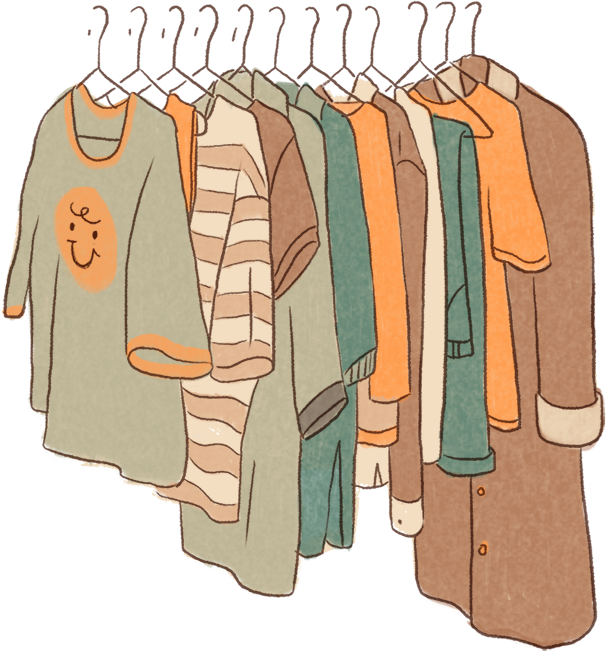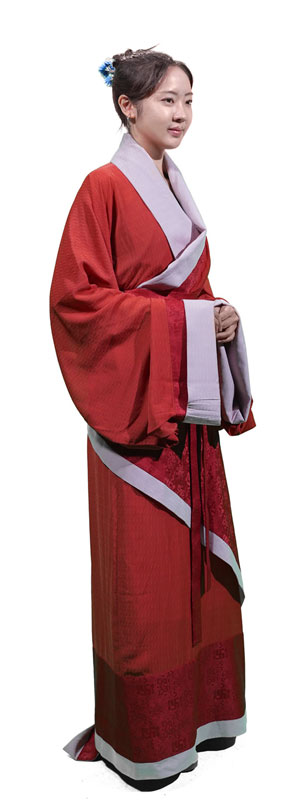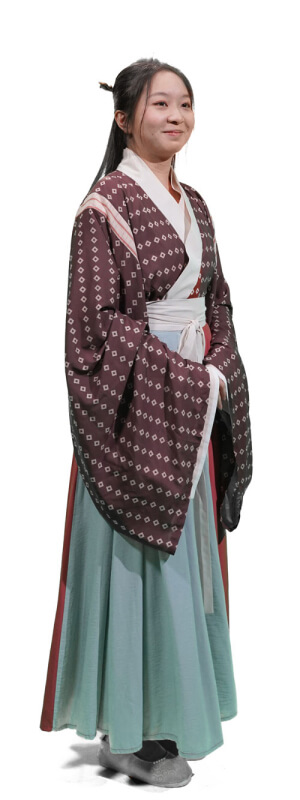‘Lifestyle rather than performance’: a visual guide to wearing Chinese hanfu
Young Chinese people are increasingly favouring hanfu, clothes once
worn by ancient Han Chinese. Explore our visual guide on how to wear
hanfu correctly and the economics behind this growing trend.
This is the second instalment of our two-part graphics series on
Chinese hanfu.








There are many reasons why people still wear hanfu today. For some, it signifies a way to reestablish a connection with their Chinese heritage and traditional culture, promoting cultural preservation and continuity. For Hanfu Hong Kong, which was founded in 2013, the practice is a way of life that embodies a unique lifestyle choice rather than just a passing trend.
The hanfu movement is progress rather than adhering to past practices, root-seeking rather than just a vintage style, a lifestyle rather than performance.
Tips on wearing hanfu
There have been debates within the hanfu community on how to wear hanfu in modern times. Some see hanfu as a tribute to Chinese civilisation and believe it should be treated with respect and hanfu style rules should be followed. Others would prioritise aesthetics above all else, believing hanfu can be worn with fewer strict guidelines.
Here are some tips from the local hanfu enthusiasts, showing some common looks that strike a balance between honouring ancient culture, looking good and also being practical for daily wear.
to compare
more details
Tone down the outfit with a modern outer garment
dressing
Some girls would wear male-inspired hanfu, for their personal style and self-expression
from different dynasties
Want to start wearing hanfu but worry about getting it wrong?
It is difficult for newcomers to distinguish between cheap knockoffs and items created based on historical research. Hanfu enthusiasts from mainland China have compiled a list of commonly used terms associated with knockoff products that can be found online. Examples include: 古裝 (ancient costume), 仙女 (female divinity) , 民族風 (ethnic style), 表演服 (performance), and 貴妃 (imperial concubine). Members of Hanfu Hong Kong encourage people to join their group and share information on acquiring hanfu in the correct format.
Modern hanfu demonstration
Local hanfu enthusiasts Kaspar, Sammi, Scarlett and Carol share with us some of the most popular hanfu and matching hairstyles.
(206 BC-220 AD) outfit

to spin 360°
(AD 266-420) outfit

to spin 360°
(AD 960-1279) outfit

to spin 360°
(AD 1368-1644) outfit

to spin 360°
Cultural significance of hairstyles and headpieces
The Han Chinese people have historically had a strong cultural connection with Confucianism and its teachings, one of which is the idea of 'filial piety', or respect for one's parents. For example, cutting hair was considered harmful to the body, because hair is considered a gift from one's parents. This belief led to Han Chinese people coiling it up or wearing more elaborate hairstyles instead of cutting their hair. The hairstyle also shows social status, leaving all the hair untied is considered a bad habit.
Our bodies, every hair and every bit of skin, are given to us by our parents, and we must not presume to injure or wound them. This is the beginning of filial piety.
Process of a complete Ming dynasty hairdo
For modern hanfu lovers, it’s very common to purchase a semi-readymade wig for styling and to add volume to the hairdo. Ancient paintings and sculptures are always their source of inspiration for hair styling.
THE EXPANDING
HANFU MARKET
China’s clothing system has a long history dating back to the Xia dynasty (2100BC) and has gone through various changes and developments over time. By the end of the Qing dynasty (1911AD), western-style clothing had become increasingly popular among the upper class, and traditional Chinese clothing was gradually phased out.
Rise and fall of traditional Chinese clothing
The modern hanfu industry chain finds its roots in academic and cultural studies, from institutions such as the China Silk Museum in Hangzhou, the country's largest museum specialising in textiles. It hosts exhibitions that showcase research and important findings about ancient Chinese clothing. These exhibitions have a strong influence on the annual hanfu trend, guiding modern hanfu designers as they create new garments for hanfu enthusiasts.
Hanfu industry chain
The popularity of hanfu has led to the growth of many related industries. For example, Cao County in Shandong Province is currently the biggest hanfu export centre in China. In Cao County alone, there are more than 2,000 hanfu related enterprises, including hanfu fabric making, embroidery, dyeing, pattern making, hanfu professional pleating, wholesale and retail stores.
Hanfu market size in mainland China
Currently throughout China there are numerous hanfu organisations that promote activities of all kinds, such as fashion shows and performances. Some tourist attractions like scenic areas and ancient towns (Panmen Scenic Area of Suzhou Ancient City, Ehu Rose cultural Park in Jiangsu, World Kejia Muqinyuan Square in Fujian, Qingyan Ancient Town in Guizhou) offer free admission to people wearing hanfu.

Hanfu rental services
Hanfu rental services have gained significant popularity in recent years. They provide visitors the opportunity to experience traditional Chinese clothing and select their desired hanfu style. These services are especially popular around ancient cities like Beijing and Xian where people could wear hanfu while travelling around the tourist attractions for photo opportunities.
On the other hand, electronic business platforms like Taobao are the most common way to purchase hanfu products for individual customers. According to a market research in mainland China, the majority of buyers would spend between 100 to 500 yuan (US$14-69) on a single piece.
Chinese hanfu consumer spending
on a single piece of hanfu
Associate Creative Director Marcelo Duhalde
Web Development
Yan Jing Tian
Edited by Kevin Kwong, Paul Buck
Photography by
Brian Wang, Kaliz Lee, Davies Christian Surya
Hanfu model
Kaspar, Sammi, Scarlett and Carol
Additional research
Han Huang, Chuqin Jiang
Sources: Hanfu Hong Kong, Palace Museum, National Museum of History of Taiwan, China National Silk Museum, Hanyangling Museum, Gansu Provincial Museum, Jining Museum, Ancient Chinese Clothing Research by Shen Congwen, History of Chinese apparel by Shen Congwen, Seven thousand years of Chinese costumes by Tsinghua University Press, The quintessence of Chinese culture–costume by the China Pictorial Press, The beauty of Chinese makeup by Hunan Fine Arts Publishing House, Southern Song Dynasty Huang Sheng's Tomb in Fuzhou by the Fujian Museum, Climate change in Chinese history by Liu Zhaoming, Chinese costume restoration team, Research report on current situation of Chinese hanfu industry and consumer behaviour 2022-2023 by iiMedia Report, White Paper on the Development of China's New hanfu Industry 2022 by iResearch, Baidu map, Guyu data